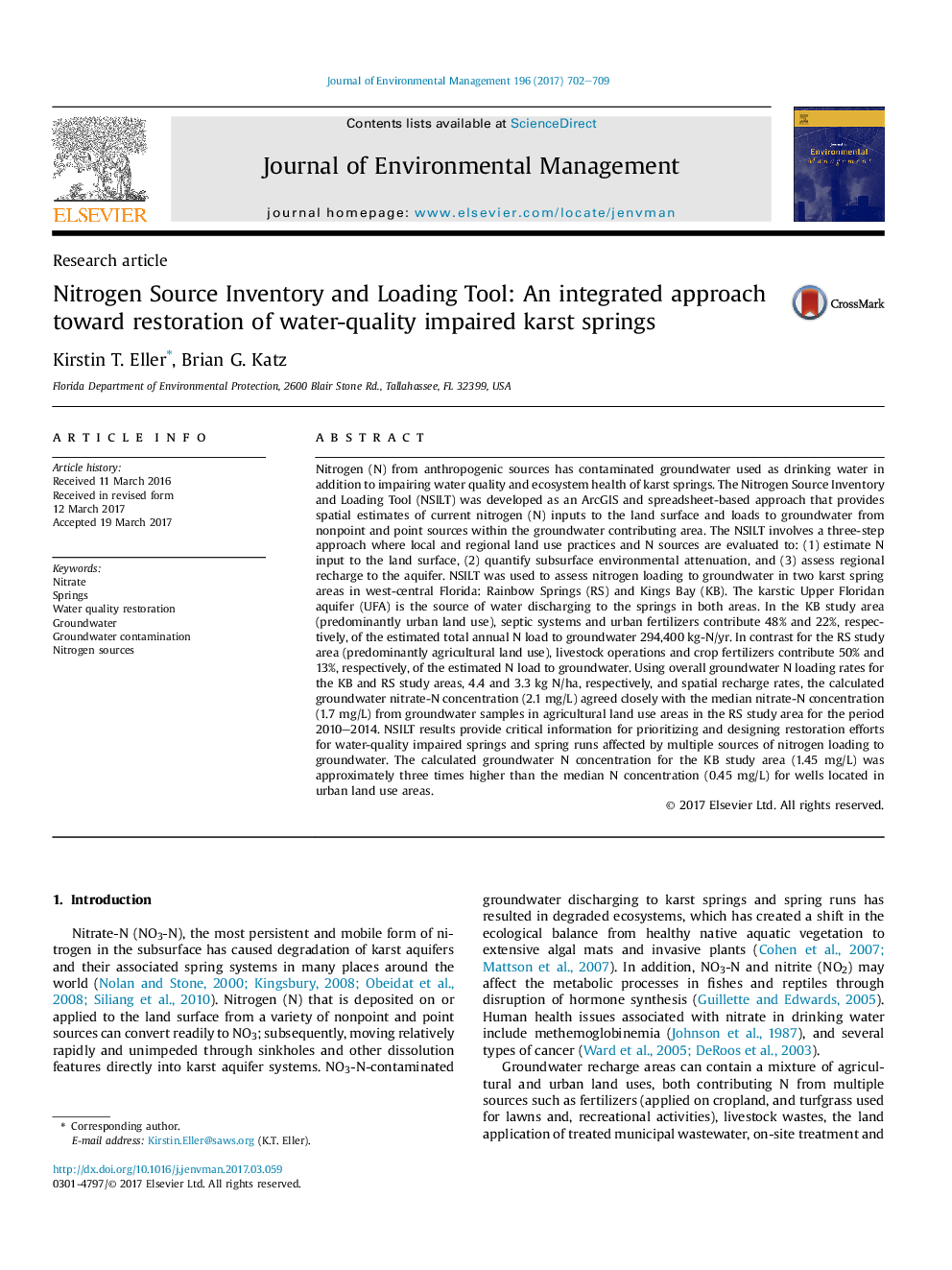| Article ID | Journal | Published Year | Pages | File Type |
|---|---|---|---|---|
| 5116709 | Journal of Environmental Management | 2017 | 8 Pages |
Abstract
Nitrogen (N) from anthropogenic sources has contaminated groundwater used as drinking water in addition to impairing water quality and ecosystem health of karst springs. The Nitrogen Source Inventory and Loading Tool (NSILT) was developed as an ArcGIS and spreadsheet-based approach that provides spatial estimates of current nitrogen (N) inputs to the land surface and loads to groundwater from nonpoint and point sources within the groundwater contributing area. The NSILT involves a three-step approach where local and regional land use practices and N sources are evaluated to: (1) estimate N input to the land surface, (2) quantify subsurface environmental attenuation, and (3) assess regional recharge to the aquifer. NSILT was used to assess nitrogen loading to groundwater in two karst spring areas in west-central Florida: Rainbow Springs (RS) and Kings Bay (KB). The karstic Upper Floridan aquifer (UFA) is the source of water discharging to the springs in both areas. In the KB study area (predominantly urban land use), septic systems and urban fertilizers contribute 48% and 22%, respectively, of the estimated total annual N load to groundwater 294,400 kg-N/yr. In contrast for the RS study area (predominantly agricultural land use), livestock operations and crop fertilizers contribute 50% and 13%, respectively, of the estimated N load to groundwater. Using overall groundwater N loading rates for the KB and RS study areas, 4.4 and 3.3 kg N/ha, respectively, and spatial recharge rates, the calculated groundwater nitrate-N concentration (2.1 mg/L) agreed closely with the median nitrate-N concentration (1.7 mg/L) from groundwater samples in agricultural land use areas in the RS study area for the period 2010-2014. NSILT results provide critical information for prioritizing and designing restoration efforts for water-quality impaired springs and spring runs affected by multiple sources of nitrogen loading to groundwater. The calculated groundwater N concentration for the KB study area (1.45 mg/L) was approximately three times higher than the median N concentration (0.45 mg/L) for wells located in urban land use areas.
Related Topics
Physical Sciences and Engineering
Energy
Renewable Energy, Sustainability and the Environment
Authors
Kirstin T. Eller, Brian G. Katz,
